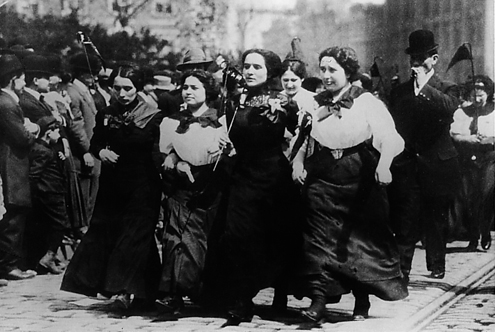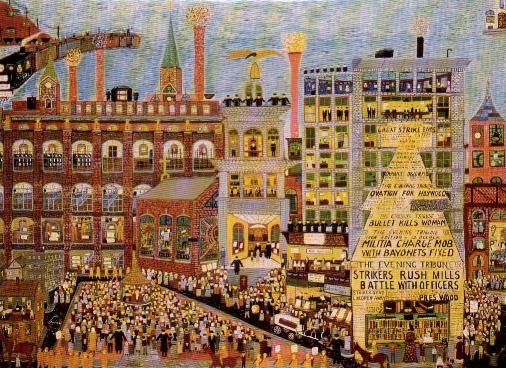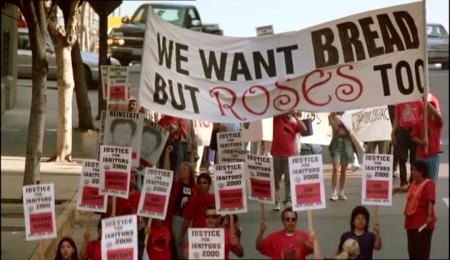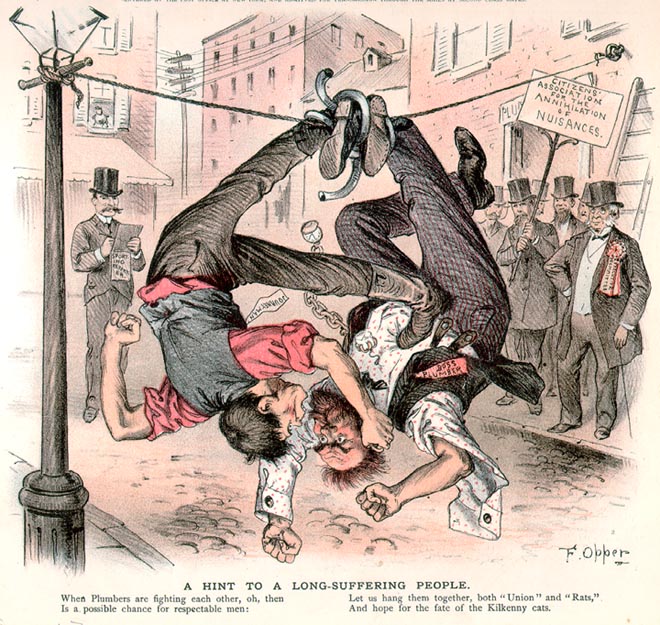You wonder if all the Bob Dylan and Pete Seeger protest songs was simply social pap to feed a consumerist society. If I had a hammer, would you want a fair wage, nailing something solid to feed the family, or would you use it to pull out nails and push the wage structure ready for demolition and landfill? A culture of revolution replaced by simply another culture of consumption, marked by its own distinction, but nonetheless part of the violent narrative of middle-class America. Pseudo-revolution and dissent is basically commodity, empty and hollow with limited transformative potential; like Coca Cola, it is positioned to be ” within an arm’s reach of desire”.

---elena borghi:“We want bread, but we want roses, too!," their signs read. The march was made mostly of women, who had organized the strike and asked for decorous salaries, but wanted poetry, too. It was 1912 and a three-month textile strike was taking place in Lawrence, Massachusetts, with dozens of immigrant communities demonstrating to obtain decent wages, shorter working hours, freedom of strike. The slogan was borrowed from James Oppenheim’s poem, “Bread and Roses," written a year before. As we come marching, marching in the beauty of the day, A million darkened kitchens, a thousand mill lofts gray, Are touched with all the radiance that a sudden sun discloses, For the people hear us singing: "Bread and roses! Bread and roses!"...Read More:http://truthseekers.cultureunplugged.com/truth_seekers/2011/03/roses-too.html
The gauchiste chic of Naomi Klein and Adbusters is part of the accepted landscape of bourgeois values. Michael Moore, the doyen of the labor union holy-writ is complicit in the partnership in the whole market-based wage distribution complex, jerry-mandered to reinforce the status-quo. Moore, Klein et al. and all these celebrity stage managed, career oriented liberal do-gooders make tremendous fees on the college speaking circuit, a clientele which generally defends its position on the hierachial pecking order of society:
Today, elite colleges produce endless studies and turn out cadre to facilitate the privatization of the public schools, which occurs under catch phrases such as “the business model in education,” “school choice,” “market-friendly policies,” “social entrepreneurialism” and others. These efforts presuppose the avoidance, neutralization and ultimate elimination of teacher unions. Read More:http://ednotesonline.blogspot.com/2010/09/michael-fiorillo-at-nyc-educator-blog.html

---In one of the paintings that Ralph Fasanella did of the great Lawrence, Massachusetts, textile strike of 1912, a detail shows the state militia entering the city to help break the strike, while the strikers and their supporters are massed along the sidewalks. Standing there are three little boys, each holding signs that together read “Go Back to School.” While the meaning of those signs may not be so clear today, at the time it was obvious to all concerned what they meant: that students from Harvard, Tufts and other elite universities in the region had willingly joined the state militia, with the support of their school’s presidents, to break the strike. Indeed, according to Stephen Norwood, whose “The Student as Strikebreaker: College Youth and the Crisis of Masculinity in the Early 20th Century” (Journal of Social History, Winter, 1994), “…college students represented a major and often critically important source of strikebreakers in a wide range of industries and services.” Student strikebreakers, often but not limited to athletes and engineering students, were involved in strikebreaking in the 1901 dockworkers strike in San Francisco (Berkeley), the 1903 Great Lakes seaman’s strike of 1903 (U of Chicago), 1903 teamster and railroad strikes in Connecticut (Yale), the 1905 IRT strike in New York City (Columbia), and many, many others. During the great strike wave that followed WWI, Princeton president John Grier Hibben told officials of the Pennsylvania Railroad that his students were “ready to serve” in the event of a railroad strike. The Boston and Maine Railroad actually placed an engine and rails on the MIT campus to help train student strikebreakers.--- Read More:http://ednotesonline.blogspot.com/2010/09/michael-fiorillo-at-nyc-educator-blog.html
The single greatest strength of the IWW was its emphasis on the culture of revolution. Unfortunately, in a relatively short time this strength was overcome by a combination of state oppression and internal weakness. While the former was clearly inevitable, the latter was borne out of an uncomfortable alliance between an anti-authoritarian, pro-autonomy camp and a centralist camp – a situation made worse by the efforts of the opportunist authoritarian communists. In a nutshell, the IWW’s apparent early strength of appealing to all sharing the same goals and economic tactics, irrespective of political agenda, soon turned into a fatal weakness, as party political opportunists sought to take over and undermine the deep revolutionary politics of the organisation.( Libcom.org)
The Overalls Brigade were gathered in Portland by an organizer named Jack Walsh in 1908. The shock troops of the direct action group of the IWW bummed their way to Chicago in boxcars, raising grubstakes along the way at street meetings. in which they sang, harangued, peddled pamphlets, and passed the hat. One of their favorite tunes with which they regaled the convention was “Hallelujah I’m a Bum” set to the old hymn tune Revive us Again. The Socialist De Leon dubbed Walsh’s men The Bummery, but the day was theirs and the veteran Socialist leader left to form a splinter group which went nowhere.

---From acclaimed director Ken Loach comes the gripping story of a group of immigrant workers who take a stand against the million dollar corporations who employ them. Newly arrived illegal immigrant Maya (Pilar Padilla) has just joined her sister on the job as a janitor in a downtown LA office building. Appalled at the work conditions and unfair labor practices, she teams up with Sam (Adrien Brody), a labor organizer, to fight their ruthless employer.--- Read More:http://truthseekers.cultureunplugged.com/truth_seekers/2011/03/roses-too.html
The organization now had an identity of soapbox singers and bums who were now brothers in idealism who were to break away from past labor practices and give the IWW a true inwardness and dynamism that fit in with its unique costume.
They gave it first, a musical voice. Walsh’s crusaders sang because when they sought the worker’s attention on street corners they were challenged by those competing sidewalk hot-gospellers, the Salvation Army. By 1909, the press of the organization’s newspaper, the Industrial Worker was able to put out the first edition of Songs of the Workers to Fan the Flames of Discontent, also known as the Little Red Songbook which was the sum and touchstone of their faith. Most of the songs were of the work of Joe Hill, Ralph Chaplin or bards known simply as T-Bone Slim or Dublin Dan. The IWW members soared on those songs, enjoying them for as much for their mockery as anything. They do recall the songs sung by POW’s in WWII to annoy their German captors.
The IWW sang in the hobo jungles , on the picket line, and in the jailhouse, and it was their singing especially that separated them from the A.F.L. by the abyss of spirit. The IWW typical literature was Jack London’s The Iron Heel, Edward Bellamy’s Looking Backward and Laurence Gronlund’s Co-operative Commonwealth; suitable material for arguments with the unorganized, and also such stuff as dreams were made on.
ADDENDUM:
socialism as a cultural critique, not just as an economic alternative. socialism as a mode of relationships, the way buber understood it. “never forget that justice is what love looks like in public….begin by talking about the kind of existentialist chaos that exists in our own lives and our inability to overcome the sense of alienation and frustration we experience when we try to create bonds of intimacy and solidarity with one another. Now part of this frustration is to be understood again in relation to structures and institutions. In the way in which our culture of consumption has promoted an addiction to stimulation – one that puts a premium on packaged and commodified stimulation. the market does this to convince us that our consumption keeps oiling the economy for it to reproduce itself. But the effect of this addiction to stimulation is an undermining, a waning of our ability for qualitatively rich relationships…market moralities and mentalities– fueled by economic imperatives to make a profit at nearly any cost– yield unprecedented levels of loneliness, isolation, and sadness. And our public life lies in shambles, shot through with icy cynicism and paralyzing pessimism. To put it bluntly, beneath the record-breaking stock markets on Wall Street and bipartisan budget-balancing deals in the white house lurk ominous clouds of despair across this nation..Prophetic pragmatism attempts to keep alive the sense of alternative ways of life and of struggle based on the best of the past. In this sense, the praxis of prophetic pragmatism is tragic action with revolutionary intent, usually reformist consequences and always visionary outlook.” – cornel west ( Martin Buber Institute )
———————————
A quick look at their Advisory Committee and major funders, shows it to be made up almost entirely of pro-privatization and anti-labor individuals and groups. Its funders include foundations such as the Walton Family Foundation, Bradley Foundation, Olin Foundation, Milton and Rose Friedman Foundation and the William E. Simon Foundation. Its Advisory Committee includes Jeb Bush and a host of investment bank, hedge fund and private equity interests. Its affiliates include the Thomas B. Fordham Foundation, The Hoover Institute and The Heritage Foundation (with the Brookings Institute thrown in for a bi-partisan gloss). While claiming to be independent and non-partisan, it in fact espouses and is dominated by the free-market fundamentalism that has served the US so very well in recent years, and is now (to use a term from the Wall Street backers of corporate ed reform)) engaging in a hostile takeover of the public schools.
Studies and reports by the PEPG show an obsession with vouchers, charters, merit pay, the “inefficiencies” and failures of collective bargaining, and other “market friendly” topics and policies. While ostensibly using the scientific method, the entire premise of their research is based on assuming as a given the existence of so-called self-regulating markets: in other words, unquestioned assumptions and ideology masked as science, and a latter-day counterpart to the 19th century medical “science” that strove to “prove” the efficacy of bleeding as a medical procedure. A 2009 paper co-authored by PEPG director Paul Peterson purported to “scientifically” show how for-profit school management companies were superior to both traditional public schools and non-profit school management entities. Independent and non-partisan, indeed. Read More:http://ednotesonline.blogspot.com/2010/09/michael-fiorillo-at-nyc-educator-blog.html
—————————————
Adorno believed autonomous artistic compositions were the pressures of society’s utopian possibilities and the last hold out for humanity’s desire for a better world: a world which he saw to be immersed in social contradictions. Until these contradictions were harmonized, music and the other arts must continue to reflect elements of social protest. Adorno also admitted that music itself contained contradictions in its own structure since it could never be completely autonomous nor fully reflective of culture. What distressed him more was autonomous music being severely threatened by commodification, displaying considerably more features of an exchange value philosophy. He contended that his criticisms of popular music were not based on elitist comparisons with traditionally ‘serious music’, but rather, that the real dichotomy was between music that was completely market-driven and music that was not… Read More:http://www.moyak.com/papers/adorno-schoenberg-atonality.html






 COMMENTS
COMMENTS